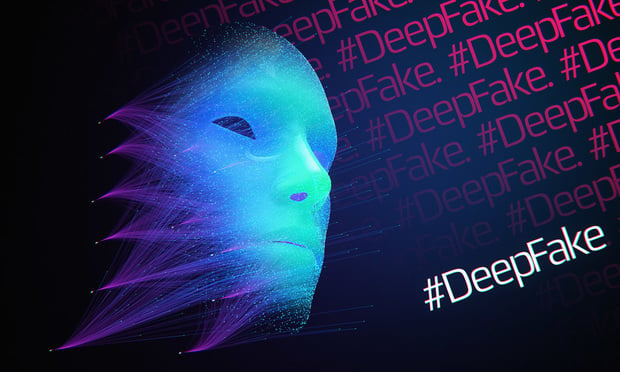Features

A Business Guide to the U.S. AI-Privacy Crossroads
As AI becomes more embedded in everyday life and business operations, companies are facing a growing regulatory maze at the intersection of state privacy laws and emerging AI standards. This article explores the privacy laws that impact the use of AI and automated decision making and offers a practical guide for business leaders that aligns AI innovation with privacy expectations.
Features

Smarter Paths to Generative AI In Law Firms
Stop running pilot after pilot with different tools but failing to move beyond testing. Start with business outcomes. Redesign processes and guardrails. Rethink pricing models. And then, with clarity of purpose, choose the tools that enable the future of legal work.
Features

AI Against Counterfeits
As AI becomes more sophisticated at detecting fakes, it is not just changing how brands protect themselves — it has the potential to change the legal framework for determining when platforms themselves might be held responsible for the counterfeits sold on their sites.
Features

Hidden Details of AI Training Data Set Creates Dilemma for Copyright Holders’ Infringement Claims
How are copyright holders to prove their works were used to train AI models if the details about the vast data sets used for such training are kept secret? That’s a dilemma that surfaced in late August when a federal judge dismissed a claim of direct infringement raised by a group of authors.
Features

AI Against Counterfeits: How Smart Technology Is Reshaping Brand Protection and Platform Accountability
As AI becomes more sophisticated at detecting fakes, it is not just changing how brands protect themselves — it has the potential to change the legal framework for determining when platforms themselves might be held responsible for the counterfeits sold on their sites.
Features

Beyond Pilots: Smarter Paths to Generative AI in Law Firms
Stop running pilot after pilot with different tools but failing to move beyond testing. Start with business outcomes. Redesign processes and guardrails. Rethink pricing models. And then, with clarity of purpose, choose the tools that enable the future of legal work.
Features

Discovery Block In Authors’ Direct Infringement Claim Against Mosaic AI Program
How are copyright holders to prove their works were used to train AI models if the details about the vast data sets used for such training are kept secret? That dilemma surfaced when a California federal judge recently dismissed a claim of direct infringement raised by a group of authors.
Features

AI In Commercial Construction Contracts
Artificial Intelligence (AI) is permeating every phase of construction — redefining how buildings and projects are designed, managed, and maintained. This article offers practical analysis, sample clauses, and insights into how AI-specific contract terms can mitigate risk and facilitate responsible innovation.
Features

AI and the Fair Use Defense: Lessons from Two Recent Summary Judgment Rulings
Two judges in the Northern District of California recently issued groundbreaking summary judgment rulings regarding whether an artificial intelligence company’s scraping and ingestion of copyrighted works to train its LLMs qualified as fair use. Both decisions carry potentially seismic importance for AI companies and intellectual property litigators.
Features

How AI Is Transforming the Buyer Journey: The End of Google, Part One
The end of Google page one is not the end of discovery. It is the beginning of a new discovery model — one where the winners are those who align with how buyers actually search, learn, and decide in the age of AI.
Need Help?
- Prefer an IP authenticated environment? Request a transition or call 800-756-8993.
- Need other assistance? email Customer Service or call 1-877-256-2472.
MOST POPULAR STORIES
- Bankruptcy Sales: Finding a Diamond In the RoughThere is no efficient market for the sale of bankruptcy assets. Inefficient markets yield a transactional drag, potentially dampening the ability of debtors and trustees to maximize value for creditors. This article identifies ways in which investors may more easily discover bankruptcy asset sales.Read More ›
- The DOJ's New Parameters for Evaluating Corporate Compliance ProgramsThe parameters set forth in the DOJ's memorandum have implications not only for the government's evaluation of compliance programs in the context of criminal charging decisions, but also for how defense counsel structure their conference-room advocacy seeking declinations or lesser sanctions in both criminal and civil investigations.Read More ›
- Use of Deferred Prosecution Agreements In White Collar InvestigationsThis article discusses the practical and policy reasons for the use of DPAs and NPAs in white-collar criminal investigations, and considers the NDAA's new reporting provision and its relationship with other efforts to enhance transparency in DOJ decision-making.Read More ›
- The DOJ's Corporate Enforcement Policy: One Year LaterThe DOJ's Criminal Division issued three declinations since the issuance of the revised CEP a year ago. Review of these cases gives insight into DOJ's implementation of the new policy in practice.Read More ›
- <b><i>Online Extra</b></i><br> Law Firms, Legal Departments Predicted to Focus More on IT RiskOverall global spending in the information security services and products sector will total $86.4 billion this year, an increase of 7% over last year.Read More ›
